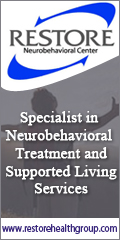
| Archives/Subscribe | Advertise | cmsa.org | cmsa.org | cmsatoday.org | April 2013 |
How to Explain "Downward Trends" in Care Management Software Functionality
While reviewing Trend Report #3, which will be released soon, I was surprised to find that only 17% of the respondents felt their care management software allowed them "to spend more time with their patients"! That was a decrease from 22% in the 2008 survey. In addition, contrary to the expectation that we would see more functionality in care management systems this year than we did two or four years ago, the survey reported a decline in almost all areas. Can this be true? Can we really say that using a system with automated workflows, letter generation, automated care plans, templates that document standard notes, and one click access to the health record to check previous history, etc. etc. etc. doesn’t save us time? Or is it that the extra time it gives us isn't devoted to "more time with a patient," but rather "more patients to care for"? Using a system has to be better than documenting manual, hand-written notes that get filed in folders and file cabinets, and using Word to manually prepare each letter; email to track follow-ups and tasks; and Excel to do manual reporting. Please tell me a system is more efficient than this! The Trend Report indicated that more respondents said their systems did not contain some of the basic, key functionality that we have come to expect. It showed dramatic declines in the availability of functions in care management systems reported by the respondents in the 2012 survey compared to the respondents in the 2008 survey (2008>2012): • Generates pre-defined care plans (28% > 21%) • Stratifies data based on business rules to promote screening or identification of program candidates (37% > 30%) • Automatically assigns, schedules, or executes follow-up tasks based on stratification results (33% > 24%) • Allows all fields or data collected to be used in reporting (53% > 41%) • Tracks/reports clinical outcomes (47% > 30%) • Keeps track of follow-up items (61% > 44%) • Uses a "task manager" to track daily activities or automated scheduling (63% > 53%) • Automatically calculates patient severity or acuity score (51% > 40%) • Calculates patient caseloads (44% > 24%) Can these statistics be correct? Aren’t these the main reasons for having a care management system – to automate and streamline workflow and processes so you can be more efficient and have more time to focus on what’s really important – your patients and their needs? It made me wonder why this downward trend was noted and I felt I had to analyze the data in more detail. While the respondents in all three HIT surveys (2008, 2010, and 2012) were similar, there were some slight differences that could account for some of the downward trends: • The total number of respondents each year were similar (521, 670, and 642) • Respondents from larger companies (100 or more) increased each year (66%, 68%, and 70%) while those from smaller companies (under 100) decreased in 2012 (21%, 21%, and 17%) • Fewer respondents in 2012 were CMs (-4%) and Operations staff (-7%) who work with the systems on a daily basis versus more respondents who were administrators (+5%) or physicians (+2%) • Less respondents from Health Plans (-16%) in 2012 compared to those from Provider or Facility Settings (+8%) There were fewer health plan respondents and more providers in 2012. Could this mean health plans had more sophisticated care management software, which accounted for more reported usage of these functions in 2008? There was an increase in providers (physicians and facilities) in 2012. Could this indicate they don’t have the sophisticated care management technology yet that they need to support the unique needs they have for ACOs, patient-centered medical home programs, and other new provider-oriented programs? Could their use of care management modules in electronic health record systems (EHRs) account for the decreases in functionality reported, since the EHR modules are not as robust as systems distinctly designed for care management? Likewise, could the slight decrease this year in CM, QI, and Operations respondents, along with the increase in administrative respondents mean that there were fewer respondents with specific knowledge of care management systems and how they are used day-to-day? So I wound up with a lot of questions and no specific answers. It is difficult to determine exactly what has caused these downward trends. I tend to think we are not dealing with systems that have less functionality or organizations that have terribly outdated systems with limited functionality, but rather that the changing health care field is moving so quickly that it is hard to have the needed functionality, especially if you are an innovative organization that is on the leading edge. We are also moving into more provider-focused programs with different, unique needs and not everyone has those systems yet. I’m convinced the technology is there for 80-90% of the functionality needed to streamline and automate workflows and processes, but we need to quickly develop the other 10-20% that would make the systems even more efficient, especially for the new emerging programs. Of course the Trend Report also highlighted other positive or neutral findings. On a positive note, there was an increase in the integration of the Case Management Adherence Guidelines (CMAGs) into care management systems (14% in 2008; 16% in 2010; and 17% in 2012). To review the full report or the series of nineTrend Reports go to TCS Healthcare Technologies’ or CMSA’s websites. The 2012 Health IT Survey was conducted by TCS Healthcare Technologies (TCS), the Case Management Society of America (CMSA), the American Board of Quality Assurance and Utilization Review Physicians, Inc. (ABQAURP) and Trajectory Healthcare LLC. These organizations teamed together for the third time to sponsor the survey, which examines how various health IT applications are changing the care management field. Schooner Healthcare Services and Trajectory Healthcare assisted in the 2012 analysis and an advisory panel of volunteers also supervised the administration, analysis and reporting of the survey. To contact Pat Stricker: Email her at pstricker@tcshealthcare.com or reach her at (530) 886-1700 ext. 215. |
|
| The leading membership association providing professional collaboration across the health care continuum. 6301 Ranch Drive | Little Rock, AR 72223 | Phone: (501) 225-2229 | Toll-Free: (800) 216-2672 | Fax:(501) 221-9608 Secure Fax Line for Credit Cards: (501) 421-2135 | Email: cmsa@cmsa.org | Website: www.cmsa.org |
 Pat Stricker, RN, MEd
Pat Stricker, RN, MEd




